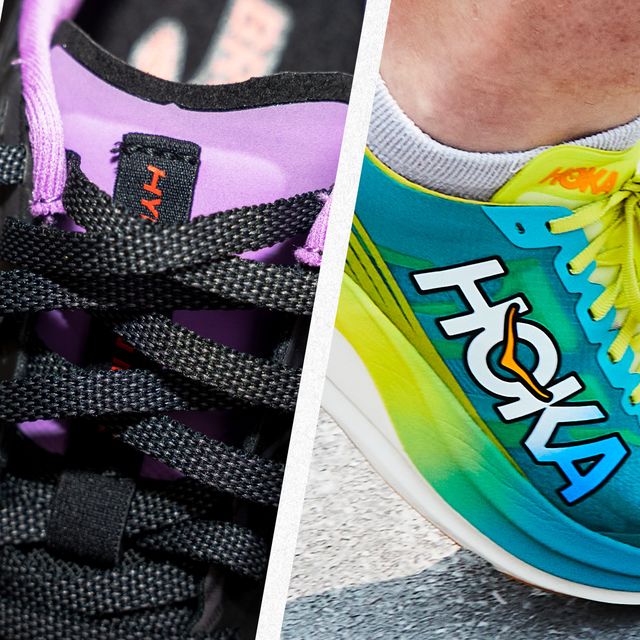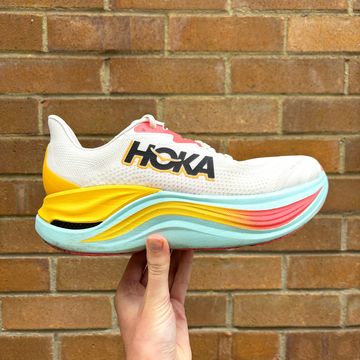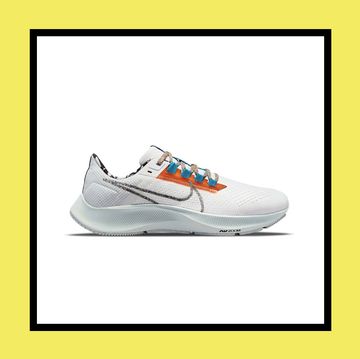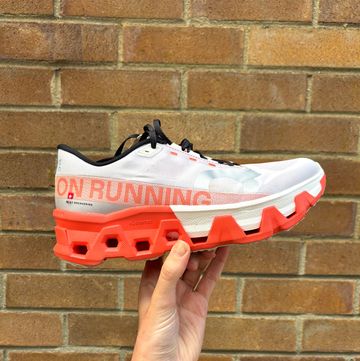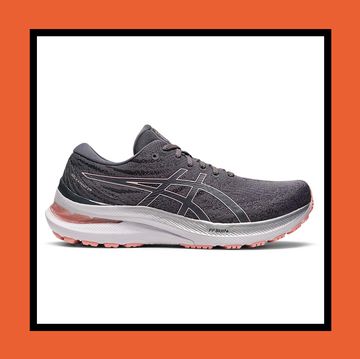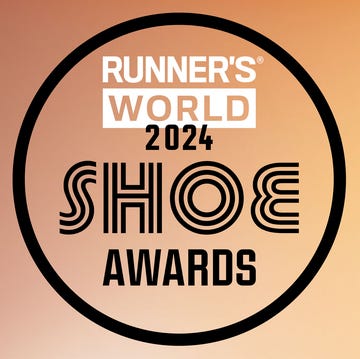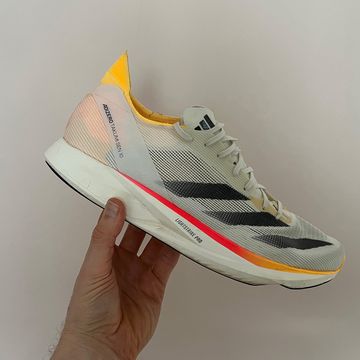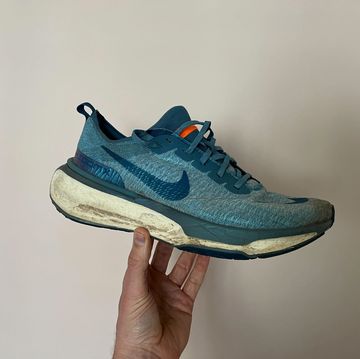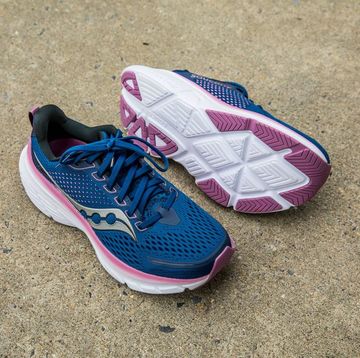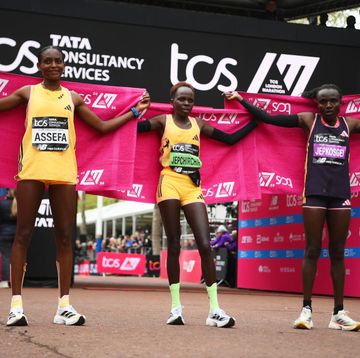Hoka and Brooks are mainstays among the most popular shoe brands for dedicated runners. Both are known for making comfortable, durable running shoes. And both offer models to suit a wide range of running scenarios.
The main difference between the two is cushioning versus stability. Hoka tends to lean into high-volume stacks of foam at its midsole for soaking up shock, and then prevents that cushioning from getting too soft underfoot by incorporating its proprietary MetaRocker, a curved plate that helps smooth transitions between strides. Brooks is better known for its GuardRail stability technology, a set of foam rails at the arch and heel that support foot alignment. Which might work better for you depends largely on whether you want greater shock absorption or greater stability.
Here, we take a closer look at the differences between Hoka and Brooks and explore which of the brands’ best models are right for you.
Hoka vs Brooks running shoes
- Daily trainers: Hoka Clifton 9 versus Brooks Ghost 15
- Budget shoes: Hoka Rincon 3 versus Brooks Trace 3
- Race-day shoes: Hoka Cielo X1 versus Brooks Hyperion Elite 4
- Max-cushioned shoes: Hoka Bondi 8 versus Brooks Glycerin 21
- Trail shoes: Hoka Speedgoat 5 versus Brooks Catamount 3
Key differences between Hoka and Brooks running shoes
Fit
Hoka shoes tend to run true to size, but can be a bit narrow due to the extra cushioning at the inner arch. Brooks typically runs tight — the company recommends sizing a half-step up. Both end up having a somewhat snug fit, with Brooks offering a bit more room in the toe box.
Cushioning
One of the defining features of Hoka is its tendency toward maximal cushioning, particularly through the midsole. The brand’s über-stacks feel pillow-soft and compress noticeably, though they tend to have reasonable energy return.
This degree of cushioning isn’t typical of Brooks, which instead presents a range of stack heights to suit different needs. Models (like the much-loved Ghost) that have the brand’s DNA Loft (EVA foam comprised of rubber and air infused with nitrogen bubbles) tend to be well-cushioned yet lightweight and responsive. Those with the BioMoGo DNA cushioning — see the Trace 3 — emphasise energy return and stability thanks to a firmer EVA.
Stability
Brooks is likely your best choice if you’re seeking stability to correct an alignment issue like overpronation or supination. The brand’s GuardRail tech is excellent, and the shoes tend to have solid support all around thanks to the integrated heel/arch stabilisers.
If stability is less of a concern, Hoka’s J-frame provides sufficient support for most by cupping the heel without the addition of rails. Essentially the J-frame is like the heel cup of a standard insole, adding stability by keeping your foot from rolling out or in.
How we compared
After many years of running on track, road, and trail, our editors know what to look for in a quality running shoe. We tested some of the brands’ most popular lines, such as the Brooks Ghost 15 and the Hoka Clifton 9, eventually choosing five from each that best represent it in one of five categories most runners look for: daily trainers, budget, race day, max-cushioned and trail.
Hoka vs Brooks: Daily trainers
When it comes to daily trainers, you’re looking for a workhorse shoe that can do a little of everything well and feels comfortable through it all. To that end, the Brooks Ghost 15 is outstanding. While the latest iteration is a bit heavier than its predecessors, the soft cushioning, decent stability, comfy upper and solid durability make it a good pick for most running circumstances.
Similarly, the Hoka Clifton 9 is great for just about everything but speedwork. The ample cushioning and light weight make it great for runs of any distance, with the easy transitions of the MetaRocker promoting smoother strides. As mentioned, the shoe may falter a bit when it comes to speedwork due to the lax energy return. But for most running scenarios it will more than do the job. The Ghost is likely your best choice if you run across a wide range of circumstances, while the lighter Clifton is a good choice if you tend to go for distance.
Read Full Review - Hoka Clifton 9
Hoka vs Brooks: Budget shoes
The Brooks Trace 3 feels great on your foot, offering plenty of lightweight breathability. It’s reasonably versatile, well-suited for cross-training or short runs, though the limited energy return and cushioning don’t make it the best choice for longer distances. For the price, the shoe is a good pick for beginners, cross-trainers or short-distance runners shopping on a budget.
The Hoka Rincon 3 is similarly versatile, but its surprisingly light weight makes it particularly great for speedwork. That featherlight weight plus moderate cushioning also makes it a decent pick from mid-length to long runs, though the relative lack of stability might not work for distance runners who need support. We'd say the Rincon is more appropriate for dedicated runners, whereas the Trace is better for general fitness training.
Hoka vs Brooks: Race-day shoes
The Hoka Cielo X1 is a solid contender for long distances, setting out to sculpt an even more aggressive forefoot rocker to amp up the speed and create an explosive ride. While most other racing shoes have a similar feeling when you lean forward — an aggressive toe-off angle — the Cielos have an aggressive angle in the rearfoot, too. It means on every stride, regardless of where you land, your foot strike will roll off the ground.
The Brooks Hyperion Elite 4 is almost the total opposite of the Cielo X1. It's not the fastest, most propulsive or most outlandish carbon-plated shoe on the market, but it succeeds in giving you a quick but comfortable ride on the road, and is therefore a brilliant choice for runners in search of a safer, sturdier super shoe for races or harder sessions.
Read Full Review: Hoka Rocket Cielo X1 Read Full Review: Brooks Hyperion Elite 4
Hoka vs Brooks: Max-cushioned shoes
For the utmost in shock absorption, it’s hard to beat the Hoka Bondi 8. The most cushioned of the brand’s famously plush line-up, this shoe devours shock thanks to its marshmallowy stack to deliver about as soft a run as can be. The mesh upper is plenty breathable, and the memory foam collar around the ankle fits and feels fantastic. The men’s version is very heavy, but all that cushioning is bound to up the scales somewhat.
The Brooks Glycerin 21 is the brand’s top contender when it comes to rivalling Hoka’s cushioning. This latest generation boasts the brand's new DNA Loft V3 foam, which is by far the softest and most shock-absorbent yet. We've found the ride to be slower but not sluggish, with the bouncy midsole acting like armour and protecting our feet and joints from the impact of each footstep on the road. The upper is breathable and soft yet sturdy, and the shoe feels amazing during runs of any distance thanks to their pillowy cushioning.
Read full review - Brooks Glycerin 21
Hoka vs Brooks: Trail shoes
The Speedgoat has gained a devoted following as a dependable, robust and comfortable performer. The lightweight foam midsole and grippy outsole combine to carry you over any terrain at speed, and testers said that their legs stayed energised after long miles. Some of that is down to Hoka’s late-stage Meta-Rocker easing you onwards, making the Speedgoats a good option for any trail distance, and superb over marathons and ultras.
The latest version of the Catamount is Brooks' great do-it-all trail shoe, whether you’re a casual weekend enthusiast or a dedicated ultra-marathoner. Brooks took what was already a decently cushioned, highly stable shoe with great propulsion and upped its traction and protection with the addition of sturdy TrailTack Green rubber on the outsole. It feels and performs great on any terrain.
Read full review - Hoka Speedgoat 5
